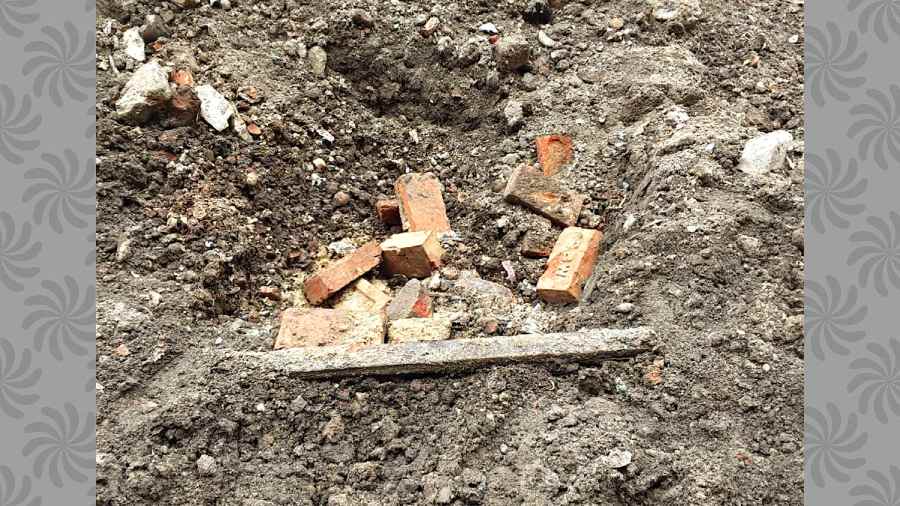Work for the EastWest Metro near the upcoming Howrah station on Thursday unearthed remnants of a railway track.
A section of railway officials said the track was possibly part of a line that dates back to the late 19th century.
The “discovery” has generated a buzz in the railway circuit. But a couple of railway heritage experts said that the age of the rail could be ascertained only after a “thorough scientific examination”.
The tracks were first visible on Thursday, during the dismantling of a parcel shade behind the office of the divisional railway manager of Howrah. Work is on to excavate whatever part is left intact, said railway officials.
“The first train from Howrah left in 1854. The tracks were laid before that. Later, the tracks were shifted to platforms 1, 2, 3 of the new Howrah station, which came up around 1905. The place of the 1854 tracks was later used as a platform for parcel shade. The dismantling of the parcel shade for East-West Metro work unearthed the rail on Thursday,” said Manish Jain, the DRM of Howrah division.
“The rail possibly dates back to the late 19th century. Railway tracks are changed periodically. It is not necessary that tracks laid in 1854 were there till 1905. But the tracks belong to the alignment where the first train left Howrah,” he added.

A sketch of the first train from Howrah in 1854 from the book Vibrant Edifice — The Saga of Howrah Station
The first train in eastern India ran between Howrah and Hooghly in August 1854. When the first train left Howrah, the “station” operated out of a building that stood on the land that now houses the office of the divisional railway manager of Howrah. A new station was completed between 1905 and 1911, according to documents accessed by railway heritage enthusiasts.
“On 15th August 1854, East Indian Railway’s first train commenced its inaugural commercial run from Howrah to Hooghly (24 miles). Regular services were introduced from the same day, morning and evening with stoppage at Bally, Serampore and Chandannagore,” says the Indian Railways portal.
“One line, one platform, one red brick room, one ticket window and just one train adds up to the neo-natal stage of train operations in Eastern India,” it says.
The tracks found near Howrah will be cleaned to check for markings that can establish its make before being shifted to a railway museum, said officials.
“It is a slice of invaluable history. We will either take it to the museum behind the DRM office in Howrah or another museum at Fairlie Place,” said Ekalabya Chakraborty, the spokesperson of Eastern Railways.
Sanjoy Mookerjee, retired financial commissioner of railways and author of multiple books on railway heritage, batted for a thorough check before coming to any conclusion about the age of the rail.
“There is no doubt that the track alignment is old. But how old the rail is can only be ascertained after a scientific examination. There could be a manufacturer’s marking on the rail. The rail structure has changed with time. Now, heavy rail is in use. Back then, it was a much lighter rail. The railway ministry can determine the age after examining the weight (per cubic inch) of the rail,” said Mookerjee, who heads the Calcutta chapter of the Rail Enthusiasts’ Society.
If a check confirms that the tracks found on Thursday dates back over 100 years, it begs a bigger question.
Why was it lying under the surface of the earth?
A railway official, who did not want to be named, pointed to neglect. “When it was no longer used, some road or some other surface must have been built over it,” he said.
When asked the same question, Mookerjee said: “There is a lot of heritage here. So, it is not valued. Heritage is preserved mostly through neglect.”
